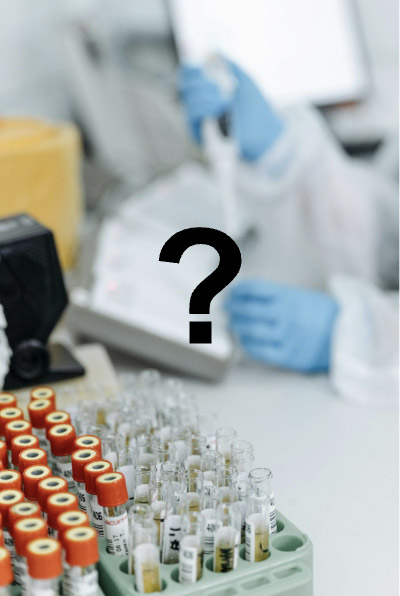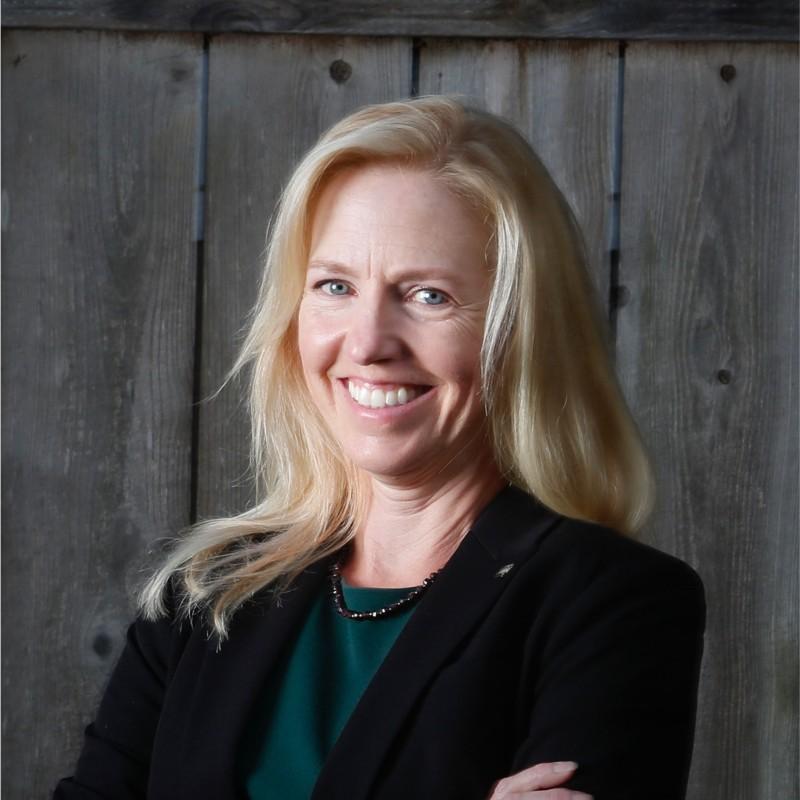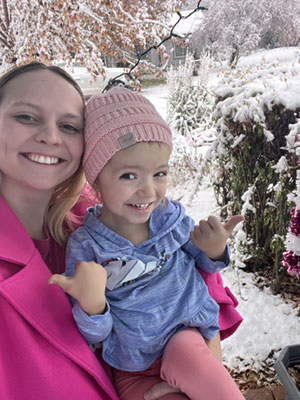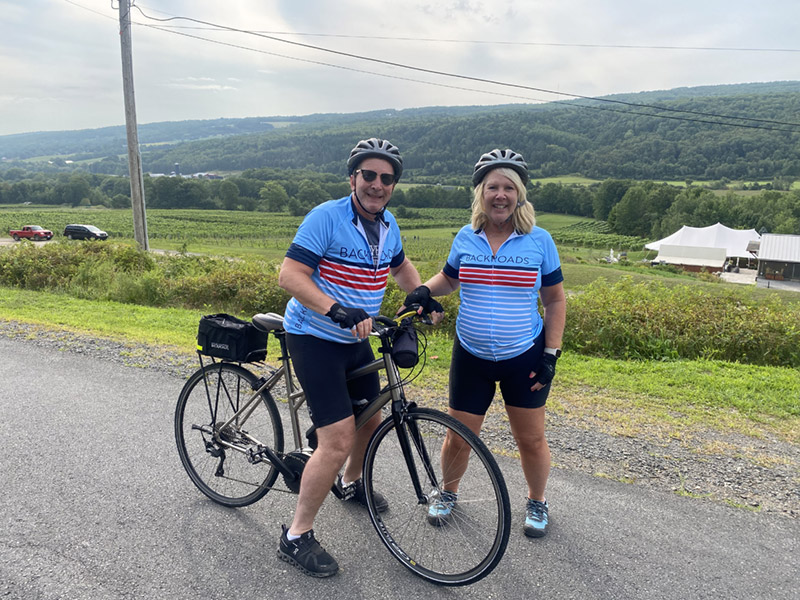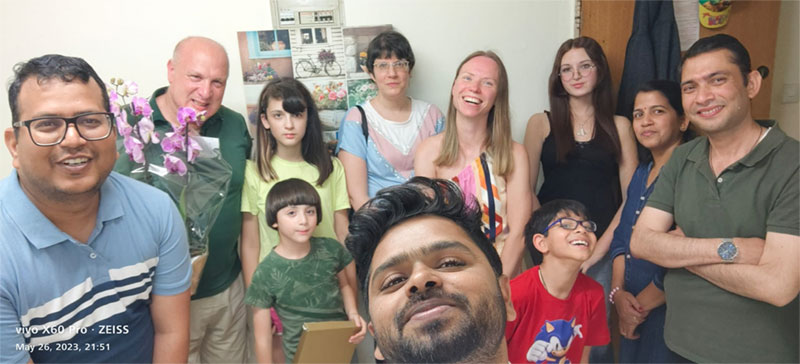The Million Dollar Bike Ride for rare disease research is a significant funder of APBD research. In January 2021, Felix Nitschke, PhD, assistant professor in the departments of Pediatrics and Biochemistry at UT Southwestern Medical Center, received a MBDR grant to conduct his proposed research titled, Conquer from Within – Treating APBD by Viral Delivery of Cross-Correction-Enabled Amylase. Dr. Nitschke’s grant envisions the development of a novel gene-based therapy for APBD.
We interviewed Dr. Nitschke recently to give you a chance to get to know him and the groundbreaking APBD research being done at UTSW:
Q. What inspired you to get into research?
Dr. Nitschke: I always had a high degree of curiosity which made me eager to find out how things work. In high school, I became fascinated by the intricacies of biological systems. I wanted to know more about how the laws of chemistry and physics are realized and utilized to enable and maintain the wonder of life. Studying biology and chemistry was the way to go for me.
Initially, I was planning to become a high school teacher, but one of my professors set me up to become a scientist. Instead of stating the current state of scientific knowledge in extensive (and sometimes boring) detail, this professor, who later became my PhD mentor, taught his courses with a heavy emphasis on the experimental approach that was used to gain the current understanding. I found this very exciting and wanted to engage in the actual process of obtaining new knowledge, of answering yet unanswered questions – of doing research myself.
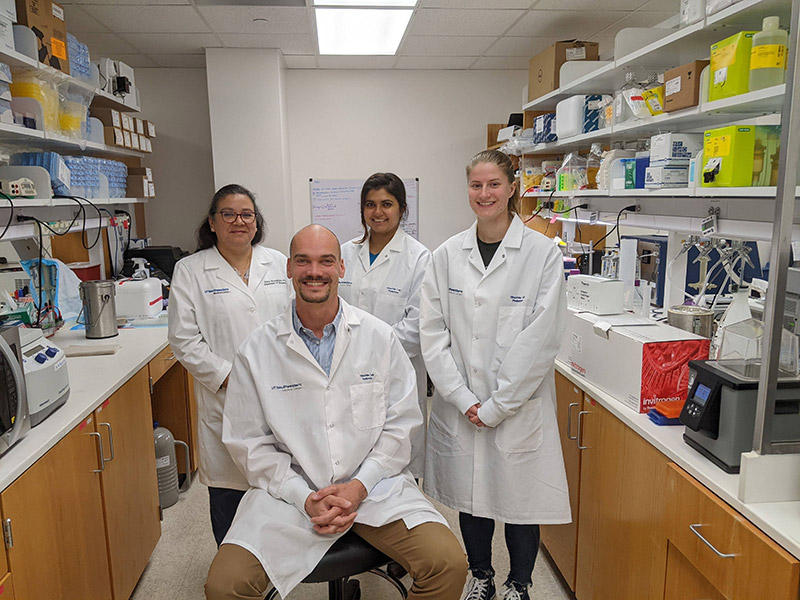
Dr. Nitschke (front, seated) with his team
What excited you about structural biology in particular?
Dr. Nitschke: Carbohydrates are central to all living systems. Fungi, bacteria, plants, and animals make, break, and use carbohydrates for various purposes. Through a student job in the lab of Dr. Martin Steup, I got acquainted with plant starch metabolism. Interestingly, starch in plants can be seen as the equivalent of glycogen in animals and humans, in that both starch and glycogen are composed of branched chains of glucose.
I was intrigued by the fact that plants purposefully produce an insoluble form of the carbohydrate, while it creates an immense problem for animals when the starch-equivalent glycogen becomes insoluble. Consequently, the mechanisms behind preventing insoluble glycogen formation as well as therapeutic approaches to ameliorate conditions such as APBD became the realm of my lab’s research.
Your work focuses on a novel therapeutic approach called “cross-correction-enabled amylase” for APBD. Tell us about this.
Dr. Nitschke: We all use amylase in our digestive system to degrade insoluble plant starch in the food we consume. Using amylase to degrade accumulated insoluble glycogen in central nervous system cells seems almost like a no-brainer. The issue is how to get amylase into the cells.
I was inspired by the work of Dr. Matt Gentry, in collaboration with Valerion Therapeutics, who used pancreatic amylase that was fused to antibody fragments which allow the engineered protein to pass cell membranes. They injected the purified protein for several days into the brains of Lafora disease mice and were able to remove polyglucosan bodies from this mouse model.
Based on this strategy, I was wondering if we could give the brain cells the ability to produce the therapeutic amylase protein; and so, the idea of viral therapy with cross-correction-enabled amylase was born. After a single injection, the virus would infect a portion of brain cells, providing them with the genetic information to make antibody-fused amylase. Through engineered signal peptides, the therapeutic protein would be secreted by the infected cells, travel through the brain, and enter (i.e., correct) even the cells that were not initially reached by the virus.
How is this work progressing?
Dr. Nitschke: The success of cross-correction-enabled amylase therapy relies on efficient secretion and cell-penetration. We proposed to optimize both aspects in cell culture to select a promising combination of amylase with secretory signal peptide and cell-penetrating antibody for virus production and in vivo studies in APBD mouse models. This optimization process is in its last stages. We have identified several constructs that are secreted well with indication for cell-penetration. We are currently working on improving the efficiency of cell-penetration by testing new combinations of cell-penetrating peptides.
Have there been challenges?
Dr. Nitschke: Working in science is always challenging. Problem solving is every scientist’s daily life – it’s the job and I like it. Setting up our in vitro cross-correction assessment pipeline of course came with the usual challenges of establishing new assays and methodologies. Unusual challenges involved conducting lab work during pandemic-related restrictions. Even now, it is hard at times to obtain required materials and reagents due to shortages. In general, I think we are making good progress despite these limitations.
What has surprised you about the discoveries from your lab and their impact?
Dr. Nitschke: It is in the nature of surprises that they can be good or bad. A good surprise was the high sensitivity we achieved when measuring secretion of our cross-correction-enabled amylase in cell culture using a split-luciferase assay system. This enabled us to optimize secretion of our therapeutic proteins with relative ease. However, secretion is only one part of the cross-correction equation. Cell-penetration was much harder to assess than we initially anticipated. Nevertheless, we had some ideas to solve this problem and are currently testing these new strategies.
Your work offers hope to our patients. But we have a long way to go. In the meantime, what can we do?
Dr. Nitschke: I am impressed by the relentless enthusiasm of the APBD patient community to take matters into their own hands – and do everything they can to support research into understanding of polyglucosan body diseases in general and into therapy approaches for APBD. Ultimately, it is the funding raised through campaigns such as the Million Dollar Bike Ride that makes this kind of research possible.
To keep the research going, it would be extremely valuable to continue these fundraising efforts and to possibly extend them. The more funding that becomes available, the more research personnel can work on APBD-related projects and the faster the research community will be able to make the much-needed progress.
Thank you, Dr. Nitschke. We wish you much success on behalf of our community!
Editor’s Note: Since 2015, the Penn Medicine Orphan Disease Center (ODC) has been hosting the Million Dollar Bike Ride to raise money for rare disease research. To date, participating teams have raised roughly $10 million to fund pilot research. The ODC provides a dollar-for-dollar match for a portion of the funds raised by the participating teams and also ensures that 100% of all funding goes towards the pilot grants, with no overhead taken out. We are thankful for this opportunity to raise money to advance critical APBD research. Since we started partnering with the MDBR program in 2016, $637,877 has been allocated to APBD research.

